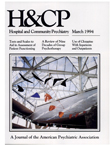An Overview of Nine Decades of Group Psychotherapy
Abstract
Group psychotherapy has experienced unprecedented growth in the nine decades of its existence. Begun by a Boston physician in 1905 as a "class" for his patients with tuberculosis, it has achieved international recognition as an effective modality for the treatment of emotionally impaired children, adolescents, adults, and the elderly. Group psychotherapy's first growth spurt occurred during World War II, when understaffed military hospitals in both the United States and England were forced to use group treatment measures to attend to the large number of psychiatric casualties. In the 1960s the community mental health centers movement, with its mandate to serve many people in large catchment areas, became another impetus for the employment of group approaches in both remedial and preventive contexts. Group intervention measures, ranging from clinical group psychotherapy to derivative approaches, have expanded to virtually all human services. They are bound to play a major role in the current move toward managed health care, with its emphasis on cost containment and accountability.
Access content
To read the fulltext, please use one of the options below to sign in or purchase access.- Personal login
- Institutional Login
- Sign in via OpenAthens
- Register for access
-
Please login/register if you wish to pair your device and check access availability.
Not a subscriber?
PsychiatryOnline subscription options offer access to the DSM-5 library, books, journals, CME, and patient resources. This all-in-one virtual library provides psychiatrists and mental health professionals with key resources for diagnosis, treatment, research, and professional development.
Need more help? PsychiatryOnline Customer Service may be reached by emailing [email protected] or by calling 800-368-5777 (in the U.S.) or 703-907-7322 (outside the U.S.).



